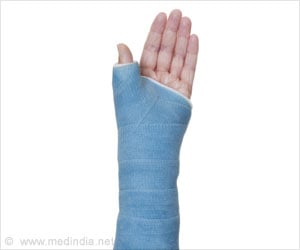The prevalence of obesity around the world is booming. Consequently, obesity-associated comorbid diseases, such as non-alcoholic steatohepatitis are also escalating. NASH can progress to cirrhosis and the need for liver transplantation. Thus, many researchers have sought ways to reduce the occurrence of NASH. Recent work from the Mayo Clinic has been promising. Dr. Baskin-Bey and colleagues have ameliorated steatosis, liver inflammation and injury in an animal model of NASH by the induction of key enzymes of fatty acid oxidation.
Currently, the etiopathogenesis of NASH remains to be defined. In hepatic steatosis, an excess of non-esterified fatty acids are released from peripheral tissues into the serum. These excess serum-free fatty acids are discharged by the liver, where they are esterified and accumulate as neutral fat, secondary to a limited capacity to oxidize excess fatty acids. A potential strategy to protect the liver from hepatic steatosis would involve mechanisms to enhance hepatic fatty acid oxidation. Hepatic fatty acid oxidation occurs by three pathways: beta-oxidation is the predominant pathway; peroxisomal beta-oxidation occurs within peroxisomes and is rate-limited by the peroxisomal L-bifunctional enzyme (L-PBE), acetyl-COA oxidase (ACO) and urate oxidase (UO); the third pathway is omega-oxidation, which occurs in the endoplasmic reticulum. This pathway is dependent upon expression of the cytochrome enzymes CYPA410 and CYP4A14. Stimulation of these pathways either individually or collectively could help remove excess free fatty acids from the liver and diminish the occurrence of NASH.Nuclear receptors are transcription factors that regulate metabolism of various biologic compounds. In particular, the constitutive androstane receptor (CAR), which is highly expressed in the liver, is a biosensor for endo- and xenobiotic compounds, such as toxic bile acids and steroids. CAR mediates the induction of detoxifying enzymes in humans by administration of the widely used anti-epileptic drug, Phenobarbital, and in mice, by the potent synthetic inducer, 1, 4-bis-(2-(3, 5,-dichloropyridyloxy)) benzene (TCPOBOP). CAR is viewed as a general hepato-protective response factor, as it detoxifies potentially injurious endo- and xenobiotics, and serves as a hepatic anti-apoptotic agent by increasing transcriptional expression of the anti-apoptotic protein, Mcl-1. In the article, Dr. Baskin-Bey demonstrated that CAR also protects the liver from injurious endobiotics, such as free fatty acids.
In summary, the principle findings of this study correspond to the effect of CAR's modulation of NASH in a murine model. The authors observed how TCPOBOP stimulation of CAR in the MCD-fed mouse can reduce hepatic steatosis. They witnessed a significant reduction in hepatic percentage fat and serum lipid levels after dispensation of TCPOBOP. They also noted a slash in hepatic inflammation and apoptosis in animals with simultaneous increased expression of genes involved in microsomal omega-oxidation and peroxisomal beta-oxidation pathways. Therefore, this research by Dr. Baskin-Bey et al. merits review by endocrinologists, hepatologists, bariatric surgeons, and any clinician with an eye on the obese patient.
Source-Eurekalert
VEN/M










